Explore Articles Filed Under: Books and Art
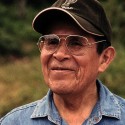
On November 16, 2009, after a brief illness, famed visionary artist Pablo César Amaringo died at his home, surrounded by friends and family, and leaving behind a mass of uncatalogued paintings and hastily jotted notes. We are more than fortunate that Howard Charing and Peter Cloudsley had already been working with Amaringo for months to get his collection in order, annotate his more recent work, create a digital archive of his art, and protect his paintings from deterioration in their humid tropical environment.

Stephan Crasneanscki and the Soundwalk Collective — famous for their soundscapes of cities and journeys into strange and desolate spaces — have now produced Ayahuasqueros, a mixture of jungle sounds, textual narration, and ayahuasca songs, with a text by anthropologist Jeremy Narby, that soundwalks us through the ayahuasca experience. You can listen to the whole thing here.

Ayahuasca, as cultural critic Erik Davis puts it, is now “swimming in the cultural water supply.” Ayahuasca crops up in the oddest places — the latest is in a romantic comedy starring Jennifer Aniston — and I continue to watch with fascination as ayahuasca slowly infiltrates American popular culture. In the popular media and on social networks, ayahuasca has become a trope for the edgy, the transgressive, the seriously cool. So I suppose we should not be surprised that ayahuasca has now been incorporated into rap culture.

There is a special narrative of almost-being-dead, which may perhaps shed some light on death and the way in which we should understand our understanding of death. And If stories of almost-being-dead demand a special form of listening, then every story demands the same humble and respectful approach, the same hermeneutic — a sense of wonder at the infinity of the human text.
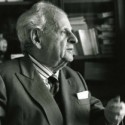
If we were to invent a philosopher as different as possible from Heidegger, we would create Emmanuel Levinas. According to his own words, the forebodings, the reality, and the memory of the Holocaust have always accompanied his thinking. He opposes Heidegger’s impersonal ontology with his own fundamentally ethical metaphysics, grounded in an infinite obligation to the other person — a call not to authenticity but to holiness. His differences with Heidegger can be summed up in a single tellingly Levinasian phrase: “Dasein in Heidegger is never hungry.”

Any serious thinking about death must confront Heidegger, whose ideas about death and authenticity in Sein und Zeit have been profoundly influential, especially — through the writing of Rollo May, Irvin Yalom, James Bugental, and Victor Frankl — in the field of existential psychotherapy. Yet Heidegger’s view of authentic resoluteness, freedom for death, turns out to be a cold and lonely and ultimately amoral solipsism. Do we have an alternative?
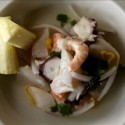
Fusion is the hot word among Peruvian chefs. Pedro Miguel Schiaffino was one of the founders of what is now generally called Amazon fusion, which incorporates jungle ingredients into gourmet dishes. Back in May, the first Festival Gastronómico de la Amazonía peruana was held for five days at the Hotel Meliá in Lima. I missed it. I had intended to bring some genuine Amazonian boiled monkey soup, but, as it turns out, it is likely the festival would not have been interested. When people in Lima speak of Amazonian gastronomy, they do not mean what indigenous people in the Amazon actually eat.
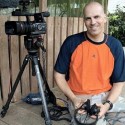
In 2006, Keith Aronowitz, then forty-four years old, was a filmmaker without a direction. He had been professionally involved in the film and television industry for more than twenty years, primarily as an editor working on what he calls “some pretty mindless stuff” — infomercials and reality shows. Now he needed a break. He decided to go to Peru and try something he had heard of called ayahuasca. He brought his camcorder and, just for something to do, he recorded some of the ceremonies and interviewed some of the people who had also journeyed to drink ayahuasca. When he shared his footage, the response was enthusiastic. So he thought: Why not make a documentary?

Significant materials in the field of Mesoamerican ethnomycology have been newly collected and translated by Brian P. Akers in his book The Sacred Mushrooms of Mexico: Assorted Texts. The work presents classic scholarship, previously unavailable in English, on Matlatzinca, Mixtec, Mixe, and other Mesoamerican sacred mushroom rituals — rich and detailed accounts of the place of psychoactive mushrooms in the lives of the peoples who use them. Plus a bonus — a classic 1960s television show.
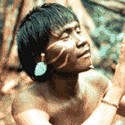
In 1975 Kenneth Good traveled to Venezuela to study the Yanomamö. After he had lived in the village for about two years, he found himself under increasing pressure to become betrothed. “What the hell,” he thought, “what would be so wrong in saying yes?” So he became betrothed to Yarima, who at that time was around nine years old. Then something unexpected happened. Good began to fall in love with Yarima. He consummated their marriage when she was about fourteen, and he was almost forty. Five years later, after having lived with the Yanomamö for more than twelve years, Good brought his now-pregnant wife back to the United States. Things did not work out as he had expected.

Discussing the article:
Hallucinogens in Africa